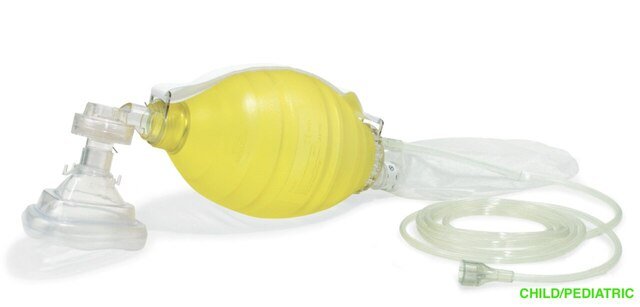Disposable Resuscitator Choices

The Ambu SPUR II Resuscitator is a disposable, lightweight resuscitator that's been a reliable resuscitation tool for trained medical personnel for decades. The lightweight, transparent design and safe grip surface provide tactile feedback and minimal mechanical resistance. Ambu also offers models for infants, pediatrics, and adults. The resuscitator comes with color-coded bags to help you distinguish the correct resuscitating bag to use.
The Dynarex Adult BVM Disposable Resuscitator comes with a large rubber-like bag and a duck-bill valve for breathing. It also comes with a reservoir tube and ten feet of oxygen tubing. The system also comes with latex-free latex tubing. The bag fits snugly over the patient's mouth, making it easy to administer CPR. The bag can be swiveled from any angle for easy patient positioning.
Another popular disposable resuscitation device is the Laerdal BAG II. It is designed to fit securely on the face and allows the medical team to see the lip color and lip shape of the patient while CPR is taking place. Its design also allows the healthcare team to use it with any type of patient, reducing the risk of cross-contamination. Visit this website to get best Laerdal Bag II Disposable Resuscitator.
There are three volume options to choose from, including the standard, deluxe, and high-tech versions.
The market for diagnostic equipment is vast and includes a variety of products for use in medical settings. Its applications include hospitals, emergency rooms, doctor's offices, physical therapy clinics, and athletic trainers' offices. The same is true for home use. You may need to conduct blood pressure, heart rate, and temperature tests, and you will need some kind of thermometer or electrode to measure body temperature. To purchase the best equipment, you should know exactly what you need.
The Access Board acknowledged the importance of enabling patients to transfer themselves while undergoing examinations, and it agreed with commenters that certain types of examination chairs are unsuitable. However, dental and podiatric chairs are designed to allow patients to transfer independently in a seated or prone position. The Access Board argues that this is a fair compromise and the standard should be interpreted to reflect this. Regardless of the decision made by the Access Board, the final rule still requires that diagnostic equipment meet all other MDE Standards.
The MDE Advisory Committee also made multiple recommendations regarding the size of the transfer surface. It noted that some equipment has a transfer surface on the end, while others are designed to transfer patients in a prone or side-lying position. The committee noted that side-to-side transfer is usually more difficult for smaller individuals, and recommended reducing the size of transfer surfaces to at least 28 inches. This standard is the industry standard for equipment used in medical settings. Click on the link to learn more about Ambu Spur II Disposable Resuscitator.
The final rule also addresses many barriers raised by the public regarding the accessibility of medical diagnostic equipment. Although the MDE Standards address many of these barriers, they do not address every possible barrier. This is why the Access Board is interested in hearing from public commenters about any other barriers to compliance. For example, the technical criteria in the final rule address accessibility for sensory and cognitive disabilities, and the equipment's capabilities for bariatric and pediatric patients. The MDE Standards have become mandatory and are a legal requirement for medical equipment.
The Access Board has issued a notice of intent to establish an advisory committee to review the MDE NPRM and respond to public comments. The committee will help determine which types of medical diagnostic equipment are accessible to individuals with disabilities. However, the final rule does not specify whether accessible diagnostic equipment in a standing position must have a seat or not. It is still required to meet the M302 and M304 requirements. There are other considerations, including the patient's needs. This link: https://en.wikipedia.org/wiki/Bag_valve_mask sheds light into the topic—so check it out!
